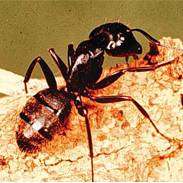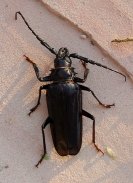



Ticks and Fleas

The Life-Threatening Pest
Why Are Ticks Causing Such a Problem?
Recently, ticks have become a major problem on the Northern Beaches, Belrose and North Shore areas. R.I.P. a pest control company can free you from this pest, with tick spraying on lawns and gardens for ongoing relief.
A life-threatening red meat allergy, which is transmitted by tick bites, has emerged on the Northern Beaches and North Shore areas. This allergy involves beef, pork and lamb (not chicken or fish).
What Reaction Does the Meat Allergy Cause?
This meat allergy is a little usual, as the onset of allergic reaction – ranging from mild gastro to life-threatening anaphylaxis – occurs between 3-6 hours after eating infected meat, and months after a tick bite.
By contrast, other better-known tick allergies show immediate anaphylaxis, large, localized rashes, swelling around the bite, and paralysis in young children and pets. Each day, the Mona Vale Hospital’s emergency department reports several cases of tick bites.
The public is very aware of allergies to bees and peanuts, however, very few know about the most common allergic reaction – ticks.
What is Causing the Increase in Tick Allergies?
We believe the reason for this increase is due to continued development across the North Shore and Northern Beaches areas. The more development occurring in these areas, the more land is taken away from tick carriers, such as bandicoots. These animals are forced to feed in residential blocks, bringing ticks with them.
Ticks get blood from their carriers and hop off their host when finished. They survive until they need more blood. It could come from you, your children, your pets, another bandicoot or possums.
Just remember, the next time a tick attaches itself to you, its last meal may have been from a rat, possum, bandicoot, dog or any other animal that satisfies its needs.
Which Area Has the Greatest Tick Numbers?
We have seen an increase in tick populations across Sydney, particularly over the last 5-10 years. Suburbs such asall Northern Beaches, Palm Beach, Avalon, Newport, Belrose, Mona Vale, Bayview, Warriewood, Narrabeen, Collaroy, Cromer, Dee Why, Manly Vale, Curl Curl Manly, Seaford, Chatswood, Frenchs Forest, St. Ives, Pymble, North Turramurra, Hornsby and surrounding areas have a particularly high degree of tick activity.
With continuing housing development and increasing social awareness of protected species, tick activity is expected to increase.
Signs of Tick infestation:
1. Since ticks are minute and fast, they can be tricky to spot. However, lookout for erratic behaviour in your pets. If they are scratching themselves more than the usual, your house might have ticks.
2. If you find tiny protuberance on your pet’s body, chances are that they are getting bitten by ticks.
3. If you spot a single tick in your house, know that it is now susceptible to tick infestation since ticks multiple in an alarming rate.
4. If your dog has relapsing fever, take the dog to vet immediately and confirm the cause of the fever, which has most probably been caused by tick bite.
How Can You Protect Your Family?
Safeguard your family and pets from these dangerous little pests with R.I.P.’s revolutionary tick spraying program. Call [02 99995510] or email us today – don’t wait until it’s too late. Our treatment will both kill and repel ticks for several months.
FLEAS
Fleas are a common pest of domestic cats and dogs. Fleas produce great irritation to cats and dogs, causing them to bite and scratch their skin, often leaving bare patches. The cat or dog tends to become restless and unwell with constant irritation of fleas over a long period of time. Fleas are also a problem because they can spread tapeworm. This occurs because fleas are capable of carrying the eggs of tapeworms, and both are ingested when the dog or cat nuzzles or licks its fur.
PREVENTATIVE MEASURES
- Clean pets and their bedding regularly.
- Vacuum floors regularly if pets come into the house.
The life cycle of the flea is similar to that of a moth - egg, larva (caterpillar), pupa (cocoon) and adult. A newly hatched adult flea is unfed, small, black and aggressive - some people mistakenly refer to these as ground or sand fleas. After they have had a blood meal, fleas lighten in colour and become larger. For every flea on your pet, there may be hundreds waiting to hatch!
TREATMENT
A successful treatment must include all areas frequented by the pet.
- Indoors - remove toys, clothes etc from the floor. Some insecticides will affect fish. Cover the fish tank and turn off the filter prior to treatment. Remove pets from the area to be treated - return them only after the treatment has dried
- Treat the pet(s) - advice may be sought from your Veterinarian. The use of soaps and shampoos may reduce the residual action of the treatment
- Be patient. Even if everything has been done correctly, you will still see newly hatched fleas, usually for several weeks. Do not leave flea infested areas undisturbed - movement hatches fleas
- Do not vacuum for at least 7 days after treatment. Place the vacuuming in a bag and put it in the bin
- Leave your pet in the flea infested areas, it will attract the fleas. If the pet is removed from the infested area, fleas will continue to hatch for about 6 weeks with normal ''human'' activity. Re-treat your pet regularly according to the label of the on-animal flea product.
Preventive measures for fleas:
① Keep your lawns and gardens maintained and well-manicured.
② Monitor the amount of time your pet spends outside the house.
③ Clean all beddings and the resting places of your pets with hot water.
④ Comb through your pets’ furs using specialised flea combs.
⑤ Eliminate rats. Rats and mice are frequent carriers of fleas.
⑥ Get your house treated by pest experts even if you find the smallest flea infestation. Fleas reproduce quickly and it will not be long before the infestation gets out of hand.













